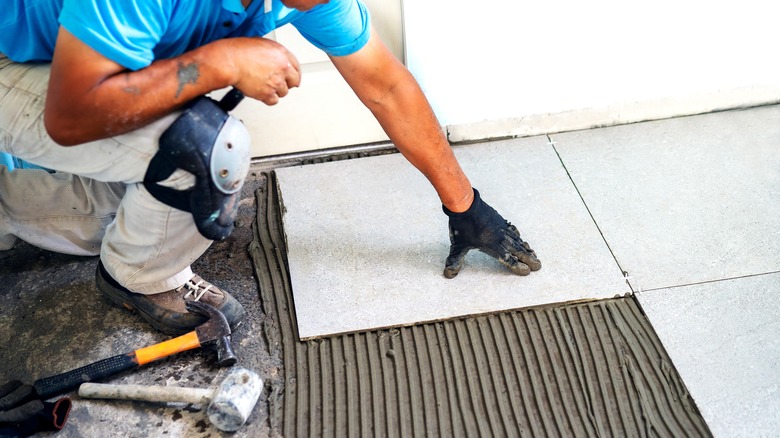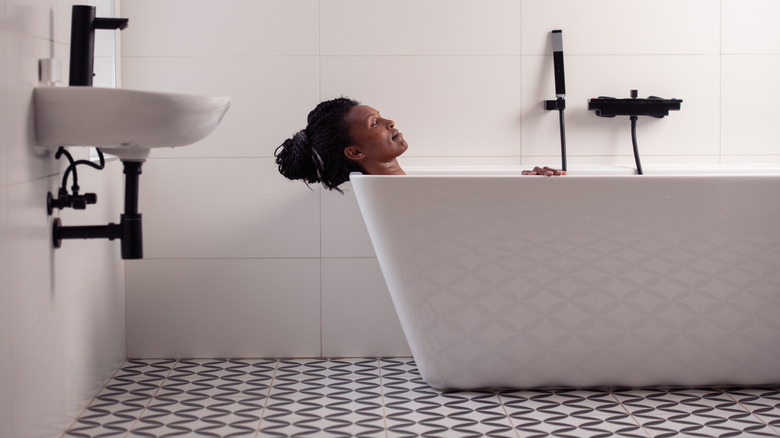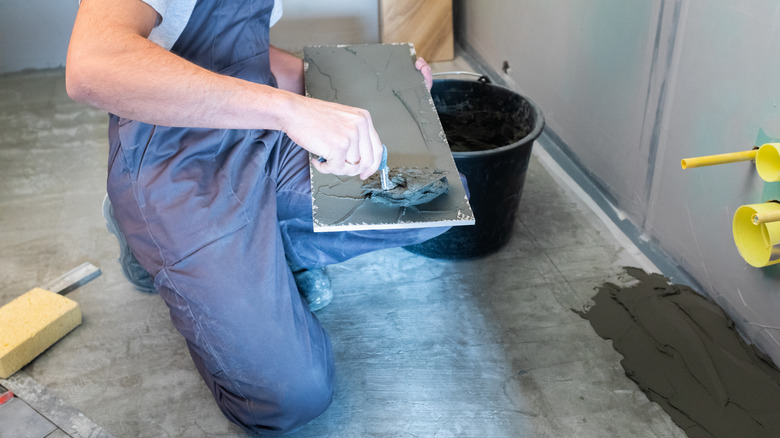The Pros And Cons Of Installing Porcelain Floors In Your Bathroom
Porcelain, as we know it, has been around for centuries. In the 1200s, it was shaped into fine pottery and used to create beautifully crafted vases and bowls. Now, the durable material has found its place in homes around the globe, including on the bathroom floor. It turns out that the treated clay makes tiles of exceptional quality. That quality is one of the biggest draws of porcelain, along with its accessibility and style. Still, it comes with a few downsides. Just like fine china, porcelain can be expensive, and it's not easy to install.
When deciding on the perfect surface for the bathroom floor, you want to consider design, functionality, and cost. Porcelain tiles check off the first two boxes, as they come in an array of styles and can handle the wear of a busy lavatory. However, if you're looking for ways to help cut the cost of your bathroom remodel or plan to take on the installation yourself, porcelain will hold you back. Before investing in these clay tiles, consider these pros and cons so you don't end up walking on regret every time you step into the bathroom.
Porcelain bathroom floors are stunning and simple to maintain
There are many advantages to installing porcelain tiles in your bathroom. For starters, the clay slates are beautiful. You can have stunning flooring in various designs that fit your home's aesthetic. Some styles even resemble natural stone, leather, and fabrics. Porcelain's versatility extends beyond the floor, as it's suitable for your shower and bathroom walls, allowing you to use it all over the bathroom for a cohesive design.
Apart from looks, porcelain tile is also super practical. The fired clay is durable, so you don't have to worry about chips, scratches, or other damage. Your tile's color and design should last for years, making it a great option for high-traffic bathrooms. Plus, this flooring is low maintenance, with its limited number of pores, making it resistant to stains, bacteria, and odors. Issues like mildew and mold, often caused by moisture, are easily prevented with regular cleaning. And when it's time to clean your porcelain tiles, the process is simple. However, these practical benefits come at a cost.
Porcelain bathroom tiles require expert installation
Porcelain bathroom tiles have a couple of minor disadvantages. Mainly, they can get cold and are slippery when wet. However, these issues are easily resolved by adding some stylish, non-slip bathroom mats. The major disadvantages aren't so easy to fix. Porcelain is more expensive than other tiles, and the style of your porcelain will also likely increase the price per square footage. Trendy and non-traditional cuts like scale, hexagon, and chevron will cost more than standard rectangle slates.
Porcelain is also more difficult to lay than other flooring, with uniquely shaped tiles being the trickiest to install; it requires special tools and materials, such as polymer-modified thin-set mortar and a wet saw. The slates are heavy, hard to cut, and cumbersome to lay. Their weight is especially critical if your bathroom is above ground level. You want to ensure the home's structure can support the extra pounds these porcelain tiles will add. This flooring isn't one you should attempt to DIY to cut costs. So, on top of the price per tile, you must also factor in installation. Still, porcelain can be one of the best materials for renovating your bathroom floor – weigh these pros and cons to decide if it's the right choice for your bathroom renovation project.


